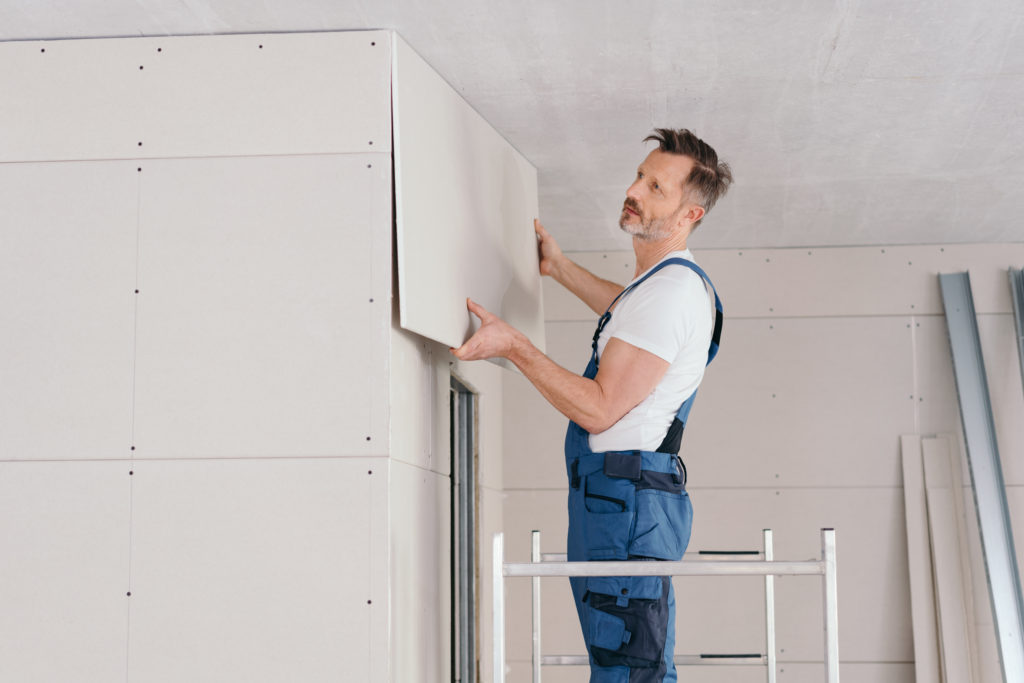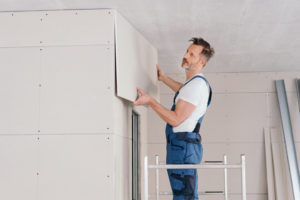Some walls require a bit of extra protection or a covering that offers different characteristics than drywall or other standard construction materials. In these instances, wall cladding can be incredibly useful.

This concept encompasses a wide array of specific materials, applications, and attributes. But the idea is something that many businesses, healthcare centers, and other facilities can potentially benefit from. Here’s a guide to help you decide if wall cladding is right for your building and what type may provide the most advantages.
Wall Cladding Attributes and Applications
In the most basic terms, wall cladding is a material that is applied over a wall. These materials are installed in order to provide extra durability, insulation, or to improve the appearance of various buildings.This type of structure can be made using a wide array of materials, including wood, metal, and composite. However, plastics are quickly becoming a popular option for these applications due to their versatility and high performance properties.
Wall cladding can be added to both interior and exterior walls. But it’s especially common for interior applications. Additionally, some types of wall cladding are fairly permanent, while others can be removed and reinstalled as needed. Basically, it’s a completely versatile solution for any building project where extra wall protection or visual changes are necessary.
Benefits of Wall Cladding
There are many advantages to having wall cladding installed over existing walls. And the exact qualities and upsides vary depending on the specific type of product chosen. However, here are a few of the main reasons why people tend to choose wall cladding for their building projects.
Durability is one of the main advantages of various types of wall cladding. Simply having an extra layer in place over a wall can protect the longevity of the main building materials. But additionally, many wall cladding panels are made with strong materials like LEXAN polycarbonate that offers impact resistance and excellent weatherability.
Wall cladding materials are also known for being especially easy to clean and sanitize. Their chemical resistance and smooth surfaces means you can easily apply a wide range of cleaning materials to them, including strong sanitizing products. Some even have antimicrobial properties to stop the spread of germs, mold, and fungus before cleaning solutions are applied. This makes them ideal for facilities like hospitals and medical centers that need to limit germs on surfaces.
Many wall cladding materials also offer thermal insulation properties. This can help make facilities more energy efficient by trapping heat inside a space. Some even offer fire resistance to support a safe environment.
Additionally, many also consider wall cladding’s aesthetic benefits. These panels can be fabricated to match the specific look that a commercial building or facility wants. So they can cover up unsightly walls or just add something extra to the space visually.
Types of Wall Cladding
Three of the main options for wall cladding include Fiberlite FRP wall panels, LEXAN Cliniwall sheet, and Palboard 3D MAX HYG. Each of these materials provides plenty of benefits. And they can be used in a variety of buildings and settings depending on the specific needs of each application. Here’s a closer look at each one.
Fiberlite FRP wall panels are made of fiberglass reinforced plastic. They can be installed directly onto solid walls – and some even use them for drop-in ceilings. Though they are popular in new construction projects, they can also be retrofitted to existing structures. These panels are known for their durability. They can stand up against moisture, so they’re perfect for humid environments or areas where they may be exposed to water. This also allows them to protect walls and other building materials from water damage or mold. In addition, they’re easy to maintain and can be sanitized effectively. Aesthetically, you can get them in a wide array of colors and textures, and they can be sized to fit each specific project.
LEXAN Cliniwall sheet is made of an opaque, non-chlorinated and non-brominated material. It’s known for its high impact strength and resistance to a variety of materials and types of wear. Specifically, it does not stain when exposed to chemicals, iodine, blood, or marks from friction. These qualities make it especially prevalent in facilities like public buildings and hospitals where cleanliness are paramount.
Palboard 3D MAX HYG is a polymer sheet made of multiple layers. The material has one smooth side and one with more texture. It also generally includes an antimicrobial layer that does not harbor various bacteria, viruses, molds, and fungi. It’s also known for being lightweight, fire resistant, easy to form, and recyclable. It can even be printed to fit various aesthetic styles or even wall signage applications.
If your building could benefit from the extra protection or cleanliness properties of any of these types of wall cladding, contact PolymerShapes Toronto today. We carry a wide selection of wall cladding materials, including Fiberlite FRP wall panels, LEXAN Cliniwall sheet, and Palboard 3D MAX HYG. All of our options are designed to increase safety, cleanliness, and durability, whether you’re looking for materials for a healthcare center or industrial facility. Our local facility is able to provide personalized, knowledgeable service to firms throughout Ontario, but we’re backed by the industry’s largest network thanks to our affiliation with PolymerShapes. This allows us to offer a huge inventory of plastic materials while still providing fast, friendly service. We can even help you customize materials and provide guidance about the best options for each application. To get started with wall cladding for your facility, visit our website to request a quote today.
